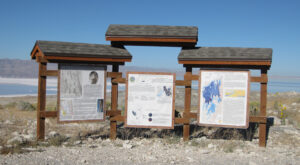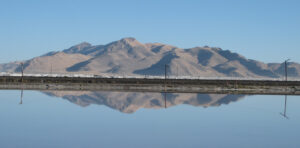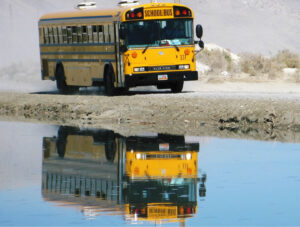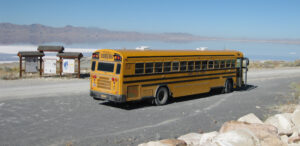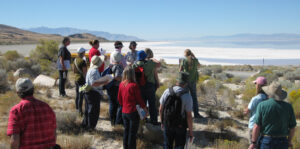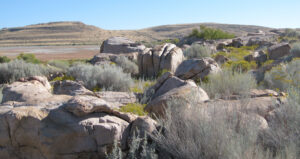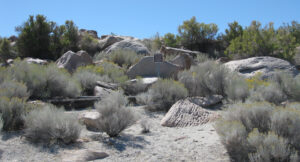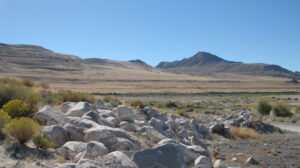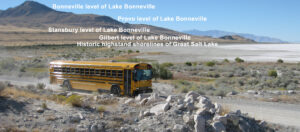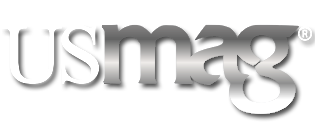In 2005, US Magnesium championed the project and donated 16 acres of land on the northern end of Stansbury Island for development of a Wildlife Interpretive Center, providing conservation education and Lake access to the public. Stansbury Island, the second largest island of Great Salt Lake, is named for Captain Howard Stansbury who, in 1850, surveyed Great Salt Lake and environs. Toward the northwest tip of the island, near one of Captain Stansbury’s camp sites, are interpretive kiosks and the Bonneville Nature Trail, a collaborative project of the State of Utah Division of Forestry Fire and State Lands (managers of the lake and much of its shore zone), US Magnesium, Tooele County Parks and Road Departments (donors of labor and maintenance equipment), the US Bureau of Land Management (managers of much of the public land of the island), and Earth Science Education (creator of interpretive signs and designer of the trail). The five major shoreline levels of Great Salt Lake and Lake Bonneville are visible from the site: the Bonneville, Provo, and Stansbury levels of Lake Bonneville, and Gilbert and historic levels of Great Salt Lake.
US Magnesium’s solar ponds encompass tens of thousands of acres set in an isolated arm of the Great Salt Lake. The Company participates in many cooperative efforts on the Great Salt Lake to help with the sustainability of the Lake and its contribution to nature.
Migrating waterfowl and shorebirds visit the Company’s ponds annually. Besides supplying raw material for magnesium manufacture, the unique salinity in these ponds also provides a supply of food for the migrating birds in the form of brine flies and brine shrimp. There are times during the year when large populations of birds are present in US Magnesium’s solar ponds: American avocets, sandpipers, eared grebes, Wilson’s phalaropes, and California gulls.
US Magnesium was a member of the Great Salt Lake Water Bird Survey team that did extensive bird census work to learn about wildlife population trends on the Great Salt Lake and the relationship of bird ecology and changing lake levels and salinity. The gathered information was compiled and analyzed by the Utah Division of Wildlife Resources and serves as the basis for managing wildlife and water issues. The Great Salt Lake Water Bird Survey was unique in the magnitude of the wildlife census that it provided and was mentioned in the March 2002 issue of the National Geographic magazine.
